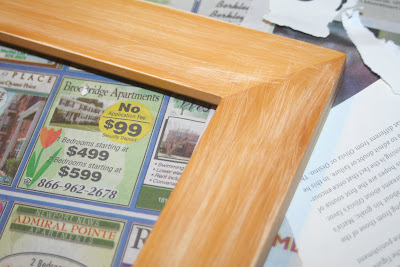
“Children! We’re heading for the car!” Abandoning my cart mid-aisle, I herded my kids from the Toy-R-Us, undoubtedly to shocked inquiries and possibly even wails. At the time, my son was small enough that I likely scooped him into the crook of my arm like a linebacker making a key offensive break, although I’ll admit that I don’t follow football and I’m not even sure if that is the type of thing linebackers do.
Safely bucked into our van, I explained to the kids that we had to leave our cart full of cool gifts behind because mommy accidentally left the Christmas potpourri on the stove top when we left the house, several hours earlier. This may or may not have been the same year we awoke on Christmas morning to find that the candles on our wooden armoire had mysteriously disappeared and had been replaced by ominous blackened rings where the candles had been merrily burning the night before. But I digress.
We were homeschooling at the time, so I’m sure on the way home from Toy-R-Us we probably talked a bit about melting points, the properties of flame, and the rigors of Fire Academy, but I can’t be sure. At home—which we noted to our relief was still standing and not engulfed in flame—we found a scene that looked something like this:

The above photo is not archival documentation from the scene—just a little something I shot last night that is eerily similar.
I fear, however, that the image and the above commentary do not do justice to the merits of the simmering potpourri. Using nothing more than a few well-chosen items from a common spice cabinet, it lends an instant Christmas atmosphere to a holiday gathering, a family movie night, or even an ordinary morning blogging at home alone. There is so much to gain by turning our attention to the possibilities of the potpourri itself that you should regard the above as a cautionary tale from a someone who can’t even manage the uneventful use of school glue.
The template for the potpourri—officially dubbed “Christmas in the Air” emerged as the singular redeeming feature of a scarring Women’s Ornament Exchange I attended in the late nineties. The original formulation probably exists somewhere in my personal archives, but it has adapted and morphed over the years, depending on what I have on hand, and it always turns out wonderful.
The basic blueprint relies on segments from an orange, a cinnamon stick, whole cloves and all spice. The original recipe calls for a bay leaf, which I toss in if I have one on hand. Some incantation of peppermint also appears in the original—I believe it was oil, which I never have on hand, but I have occasionally been known to toss in a starlight mint. Star anise makes a pretty addition, but its bold fragrance really changes the potpourri's aroma profile, so experiment to see what you prefer. The entire mixture goes into a water-filled sauce pan or other metal simmering pot and put on a back burner to simmer, emitting a wonderful aroma that permeates the whole house.
A package of your own personal blend makes a wonderful hostess gift or thoughtful gesture for coworkers.

Get creative with the packaging. I can see it in a brown paper bag, tied with festive ribbon, or in colored cellophane. The whole point, though, is the offering of common elements given as a simple olfactory experience. Which scientists happen to believe to be the most powerful. Which can be a good or bad, depending on whether we’re talking about the simple pleasure of spicy goodness, or the heavy stench of smoke and flame.
So--one little thing. Don't forget the water. Add lots of it when you start the potpourri, and check it every now and then, to see if it needs more—because water, you know, evaporates, especially if you go out shopping for several hours.








